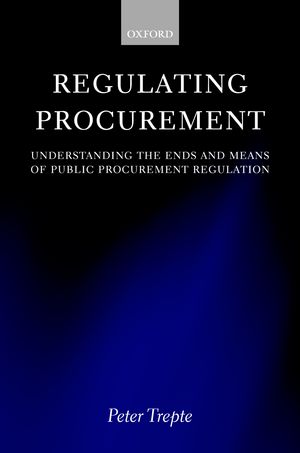
Public procurement regulation is the body of law dealing with the way in which public authorities award contracts. Procurement by public bodies has implications for a number of areas of law, in particular trade and competition law and administrative law. Failure to comply with public procurement rules can lead to public bodies being sued by unsuccessful contractors (or their governments), under national, EC or WTO law. The object of this study is to show why procurement is regulated at all and to provide an understanding of the differences between national and regional systems and a guide to the emerging international system. This book will provide an essential international and comparative perspective on the foundations of procurement for academics, practitioners and policy makers.